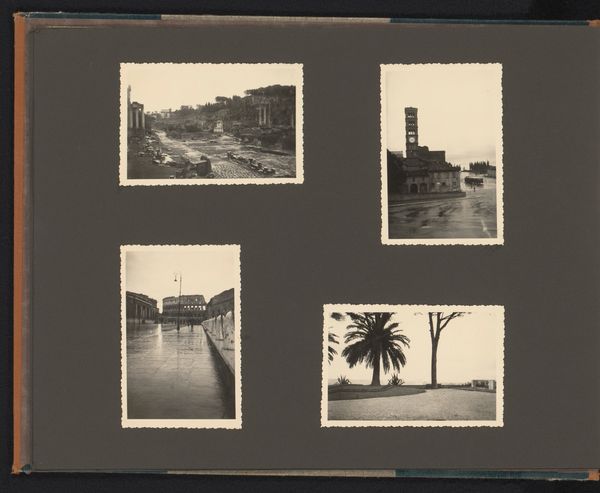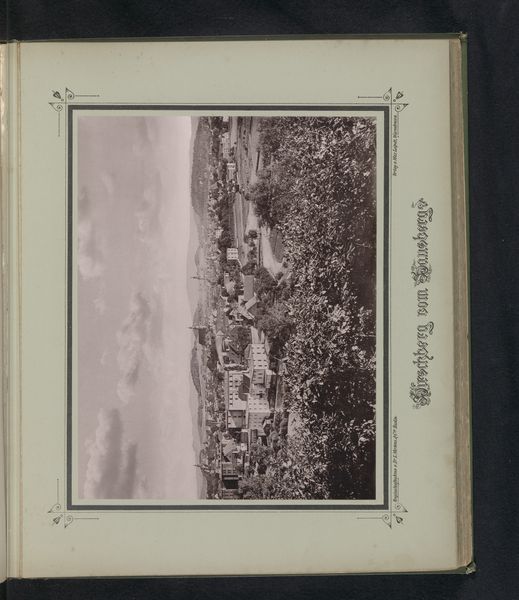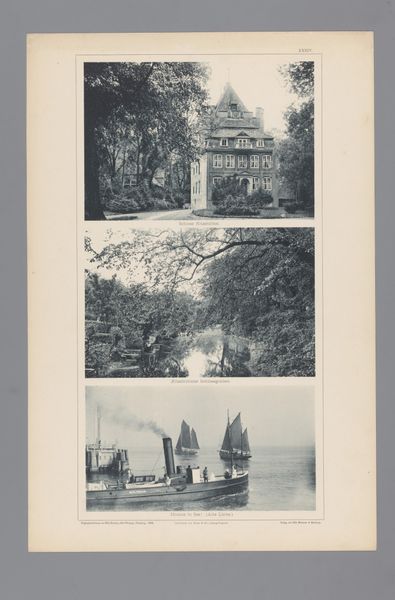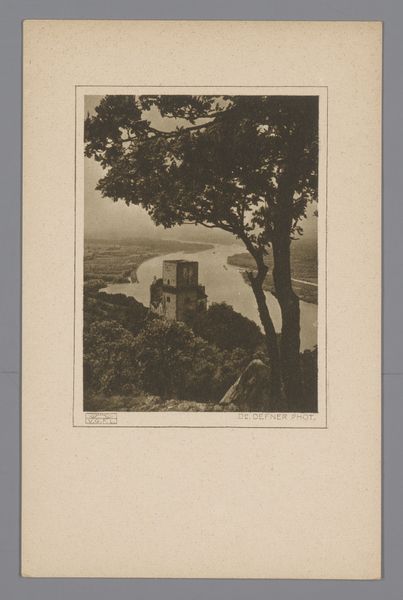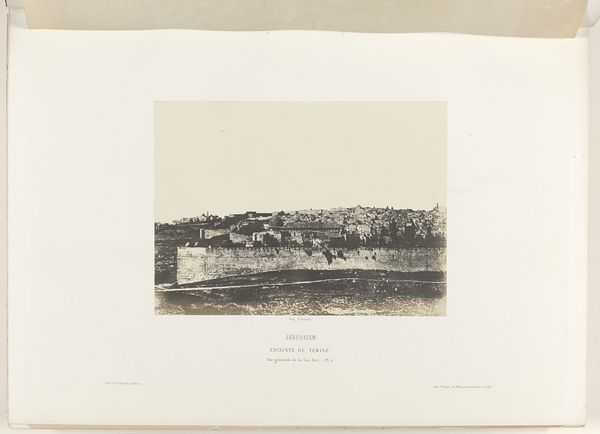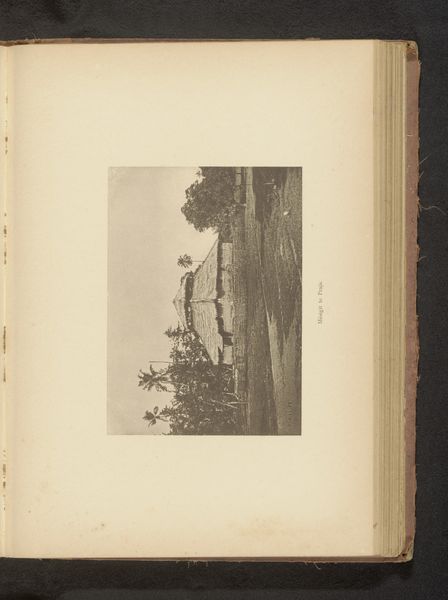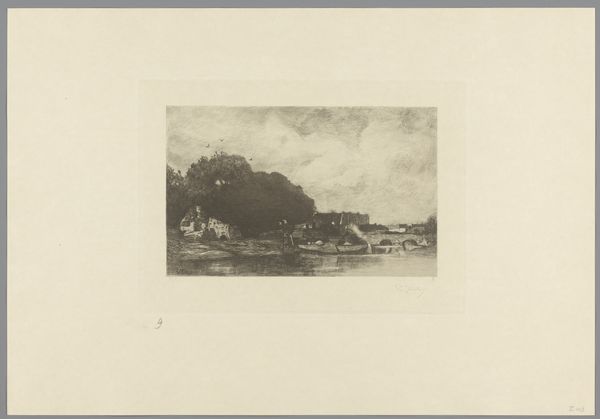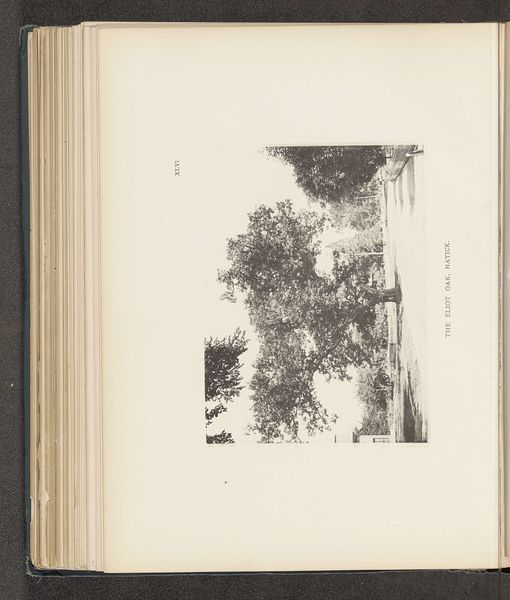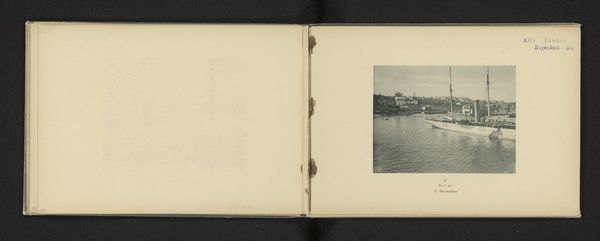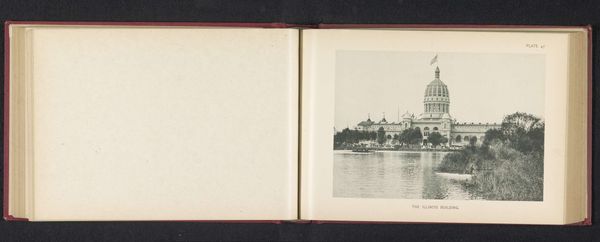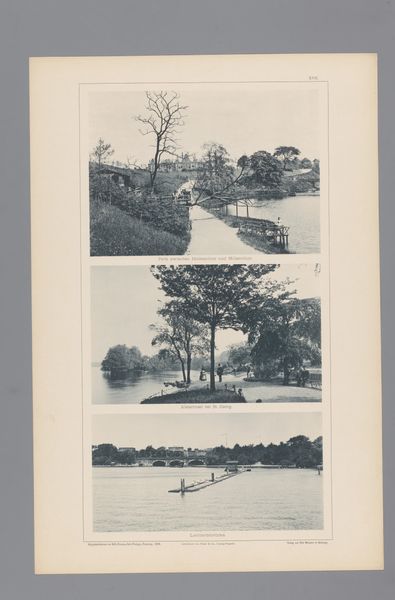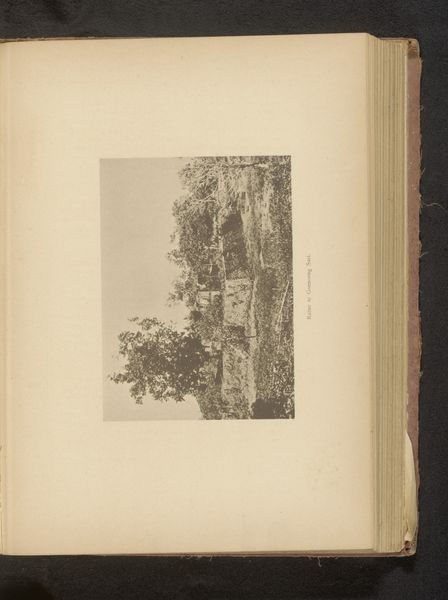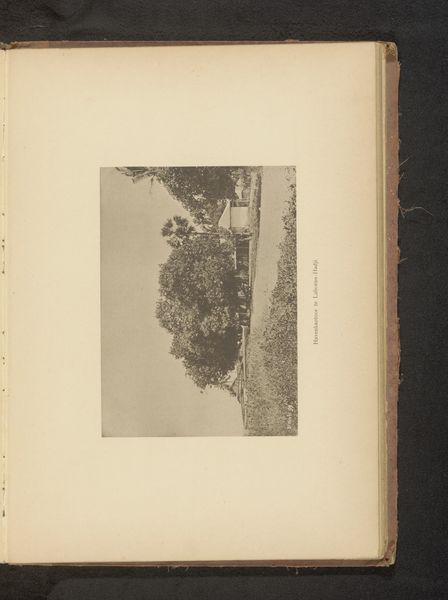
Twee gezichten op Blankenese in Hamburg, afgebeeld drie vrouwen op een uitkijkpunt en een gezicht op de Süllberg 1894
0:00
0:00
print, photography
#
pictorialism
# print
#
landscape
#
photography
#
cityscape
Dimensions: height 493 mm, width 331 mm
Copyright: Rijks Museum: Open Domain
Curator: This photographic print, created by Wilhelm Dreesen in 1894, offers twin views of Blankenese in Hamburg. It's titled "Twee gezichten op Blankenese in Hamburg, afgebeeld drie vrouwen op een uitkijkpunt en een gezicht op de Süllberg." The sepia tone evokes such a sense of nostalgia, doesn't it? Editor: Immediately I'm struck by the almost painterly quality. The composition, especially the upper image with the women and the gracefully arching birch, seems intentionally arranged for pictorial effect. How much post-processing do you think went into a print like this at the time? Curator: That's a keen observation. Pictorialism was all about elevating photography to the status of fine art, so techniques like soft focus, dodging, and burning would definitely have been employed to manipulate the image and achieve a specific mood, aiming for an aesthetic experience, rather than purely documenting reality. And the symbolic implications, turning women into living figures from classical artworks. Editor: Interesting. Look at the details on the bottom half. The Süllberg feels massive in comparison to its surrounding neighborhood of smaller residences at sea level. I wonder what materials these buildings are composed of? The image makes the architecture almost monolithic, yet domestic, a stark contract. What was Dreesen saying here about the social structure between domestic and commercial worlds? Curator: Perhaps something about Hamburg's aspirations at the time? We should consider the broader context. Germany was rapidly industrializing and asserting itself on the world stage. Images like these, showcasing prosperity and leisure alongside industrious enterprise, played a crucial role in shaping a sense of national identity and progress. Dreesen seems to be using archetypes and emblems for each subject. The feminine mystique with that bit of "progress". Editor: So you think Dreesen intentionally utilized the contrast to highlight those dynamics, even those imbalances? A way to justify it even? Curator: He captured it through a softened lens, lending this modern viewpoint an appealing, palatable form. I think he saw them and gave the image both historical presence with "current" progressiveness by representing the image. Editor: That resonates. It gives a tangible feel for the time period. Makes you wonder, what new image will people make and then "sepia tone" 100 years from now, and will people still recognize what message we wanted to deliver through our image. Curator: It's a compelling reminder of how images shape our understanding of the past and perhaps unconsciously direct us into the future. Thank you! Editor: An intriguing consideration!
Comments
No comments
Be the first to comment and join the conversation on the ultimate creative platform.
